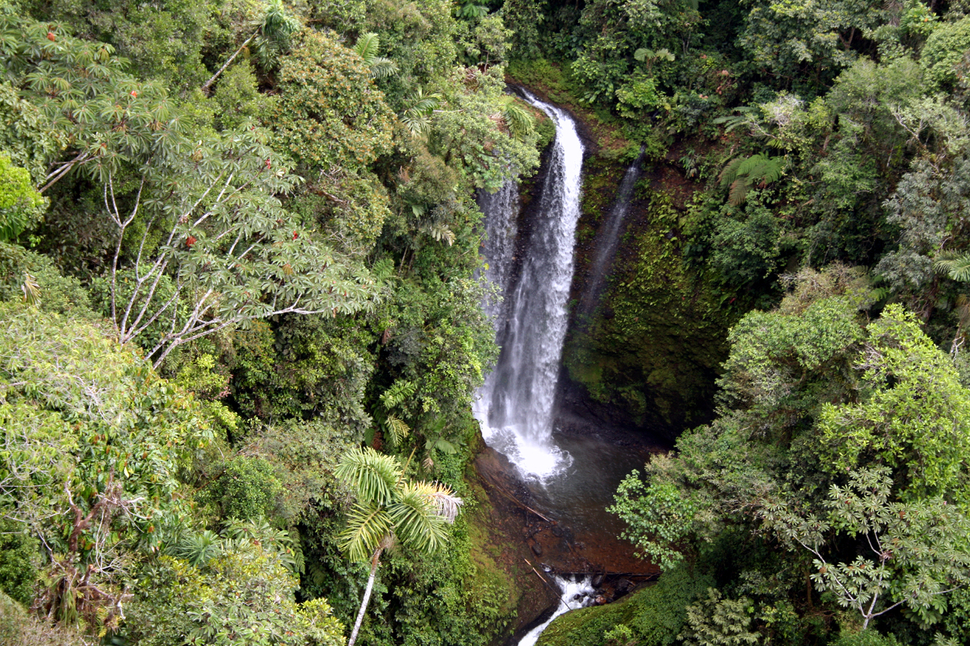Waterfall in the Srayaku territory in the Amazon rainforest of Ecuador. Photo: skifatenum via Flickr (CC BY 2.0).
This week, at the same time as the COP21 was taking place in Paris, an unusual vessel sailed the waters of the Seine River, The Guardian reported. The vessel in question, a traditional Sarayaku canoe, underwent a long journey from the very heart of the Ecuadorian Amazon to the heart of the 21st Session of the UNFCCC, the largest climate-change international negotiations. The canoe’s crafters, native Sarayaku people, travelled about 10,000km to convey a message: climate policies must protect nature, as nature holds the key to happy human lives.
The Sarayaku’s idea might seem rather simple at first; after all, what is new about a boat sailing in the Seine River? However, the idea was not simple at all. Through nothing more than a canoe (and funding, cameras, media, publicity, etc… but mostly a canoe), their journey was meant to convey all sort of messages to anyone who would dare to listen. In fact, the journey spoke about diversity, world-views and big decisions.
First, diversity. A Sarayaku canoe navigating the Seine River might seem out of place to some, as it is not often seen. Yet, it acts as a reminder of how different the cultures around the world are.
Second, world-views. The message of the Sarayaku is much deeper than it might seem. For the Sarayaku, nature is close to the Incas’ pachamama, a mother earth/time. For them, as well as in the Ecuadorian constitution, nature is a subject of rights and for the latter natural environment has legal standing. Moreover, their culture, as well as the theory behind the country’s policy, goes beyond human well-being and strives for Sumak Kawsay or Buen Vivir (in Spanish), which is the Good Living. This notion refers not only to basic necessities but also to emotions, mind, body and spirits in equilibrium. In this world-view, the Kawsak Sacha or Living Forest is the economic and life model that recognizes forests as a living system made by living beings, including humans. Those living beings, when they care for each other, they also energize each other.
Third, big decisions. The Sarayaku canoe serves as an indicator of how the large is the scale of the decisions that could be made in the COP21. Decisions such as stricter emissions regulations or forest protection can have effects in nations with very different world-views. The Sarakaku’s journey makes clear that those decisions are complex.
Overall, the event serves as a call for innovative ways of building bridges and solutions between different cultures and different world-views who need to take big decisions together. In the spirit of Ely, Smith, Stirling, Leach, and Scoones (2013), the world needs to build hybrid pathways towards sustainability to build resilience against climate change.
Watch a mini-documentary of the canoe's journey here!
Although the Sarayaku’s performance in the Seine River might seem unusual, it has not been the first time that indigenous peoples use symbols to convey a message. In 2004, for instance, Mazahua women in Mexico used similar means to speak their minds about a water conflict in their territory. Here are some photographic galleries of cases of people, indigenous or not, that tell stories of development and infrastructure from different perspectives.
Reference
Ely, A., Smith, A., Stirling, A., Leach, M., & Scoones, I. (2013). Innovation politics post-Rio+ 20: hybrid pathways to sustainability? Environment and Planning C: Government and Policy, 31(6), 1063-1081.
